What Is Skin’s pH Level And How To Maintain It?
Achieve that much-loved happy and healthy skin by balancing its pH level.

Image: Shutterstock
Your life is all about balance. Be it balancing between your personal and professional life, or family and friends, you always strive to balance everything to lead a happy and peaceful life. But what about your skin’s pH level? Have you thought about the pH balance of your skin? Yes, your skin also has a balancing game that needs to be maintained for healthy and happy skin.
Confused? Wondering what that is? Or how to take care of your pH level? Keep reading to know why you need to think about your skin’s pH level.
In This Article
What Is Skin’s pH Level?
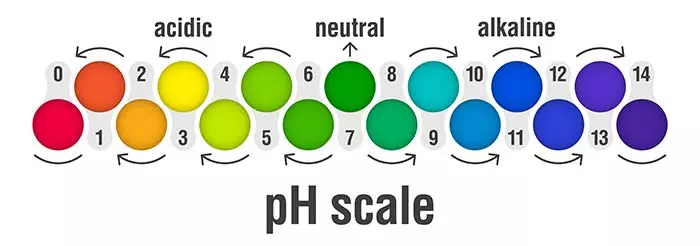
Turns out, your skin is extremely happy and functions well when it is right at that sweet middle spot. You’ve probably heard the term ‘pH balance’ in the advertisements of most skin care brands and passed it off as a marketing gimmick. But this is something that you should pay attention to.
The term ‘pH’ means ‘potential of hydrogen.’ In other words, it is the measure of the concentration of hydrogen ions in any substance. This pH scale was devised in the early 1900s by Danish chemist S.P.L Sorensen for measuring acidity and alkalinity. It ranges from 0 (most acidic) to 14 (most alkaline).
Your skin also has an acid mantle, which is the skin’s barrier. This acid mantle is formed when your skin secretes sebum and breaks down fatty acids. It is responsible for keeping your skin healthy and moisturized by blocking all the germs and toxins from harming it.
Now that you know what skin’s pH level is, learn how you can easily check your own skin’s pH level to maintain a healthy balance in the next section. Read on!

Key Takeaways
- Using extremely hot water, harsh cleansers or sun exposure are the common causes of imbalanced skin pH levels.
- Always moisturize to intact your skin barrier and maintain your pH level.
- Always wear sunscreen before going out to avoid ph imbalance.
- Use antioxidants like vitamin C to balance your pH level.
How To Check Your Skin’s pH Level?
Use pH testing strips found in pharmacies to check your skin’s pH level. Simply press the strip to your skin, and it will change color to reflect the acidity level, giving you a quick idea of your skin’s balance. Visit a dermatologist for a more detailed analysis, as they can use professional tools like a pH meter to accurately measure your skin’s pH and provide personalized advice based on the results.
Your skin is at its best when there is a balance between its acidity and alkalinity. Throw it off track, and your skin will go crazy. Explore why you should be extra careful about that oh-so-delicate pH balance of skin in the next section.
Why Should You Care About Your Skin’s pH?
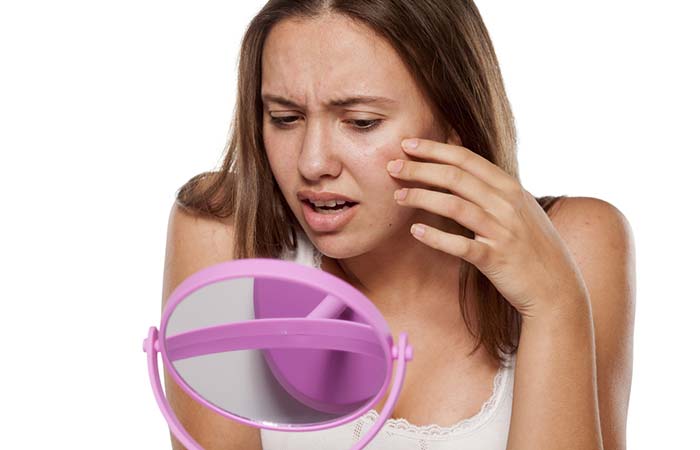
When the acid mantle of your skin is too alkaline, your skin becomes sensitive and dry. You may even experience inflammation and signs of aging due to certain enzymes that can destroy your collagen levels. This usually happens when you change your skin care products too often.
When you use products that have a high pH (alkaline), it affects the permeability of your skin. When your skin’s permeability is compromised, it becomes vulnerable to skin issues, irritants, and microorganisms. Higher skin pH levels may cause skin issues such as:
- Ichthyosis vulgarisi An acquired skin condition characterized by extreme dryness and dead cell formation that resembles fish scales.
- Atopic dermatitisi A chronic condition, also known as eczema, in which the skin becomes flaky and itchy and may occasionally discharge fluids. (or eczema)
- Candidal intertrigo (a skin infection caused by the yeast Candida albicans)
- Tinea pedis (or Athlete’s foot)
- Acne (P. acnes grows on the skin when its pH level is between 6 and 6.5) (1),(2)
High pH level can also accelerate your skin’s aging process (3).
 Quick Tip
Quick TipSo, what is the ideal pH level for your skin? And how do you know whether it’s balanced or not? Here’s how you can figure it out.
What Is The Ideal Skin pH? How Can You Find Out Your Skin’s pH?
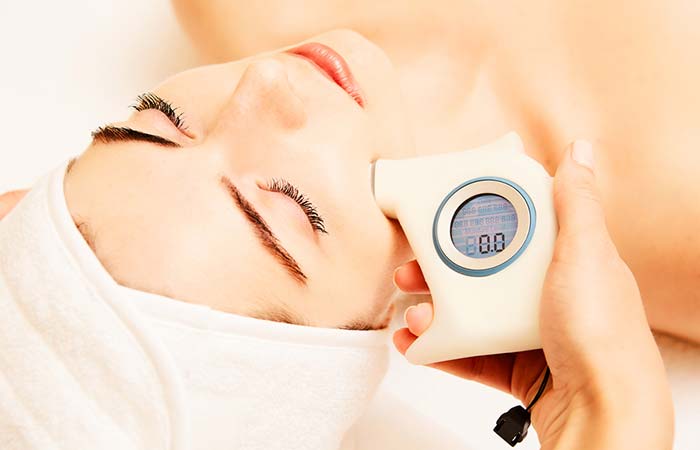
Ideally, our skin should be slightly acidic. Thus, its pH level should be 5.5. However, it is fine if it is somewhere between 4.8 and 6. This ensures your skin’s barrier function is active and guarding you against all toxins, bacteria, and other external factors.
It is tough to measure the pH of skin and hair directly. However, a dermatologist can help you determine it. They use a pH meter to analyze your skin’s surface thoroughly, identify any shifts in your pH level, and evaluate the condition of your skin or the state of your skin issues.
However, there are still ways to find out if your pH levels are off-balance. Usually, your skin will give you signs when something is not right. Keep an eye out for these signs:
- Excessive oiliness
- Dry patches
- Redness and rashes
- Eczema
- Psoriasisi An autoimmune condition that causes raised, scaly patches on the skin due to the fast growth of skin cells.
- Acne
- Signs of aging (fine lines, wrinkles, and sagging skin)
The study highlights the significance of pH in nature and humans, with a range of 1 to 8 in different organs. The stratum corneum, with a physiological pH of 4.1-5.8, is regulated by various factors. Initially recognized for its antimicrobial properties, pH also affects skin barrier function, lipid synthesis, epidermal differentiation, and desquamation. pH regulation impacts enzymes and proteases involved in ceramide metabolism and epidermal differentiation. Disruptions in the skin barrier can lead to increased pH, resulting in inflammatory and epidermal-related skin conditions. Restoring pH through topical acidification promotes a healthy microbiota, repairs the skin barrier, induces epidermal differentiation, and reduces inflammation.
All these are signs that your skin’s acid mantle is damaged. But how did it get so bad? There are several factors (and habits as well) that can disrupt your skin’s pH levels. Keep reading to find out more about them.
Factors Affecting Your Skin pH Levels
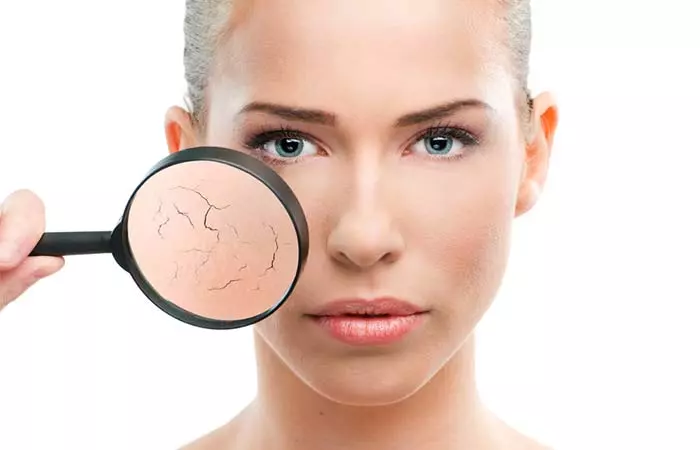
1. Age
As you get older, your skin becomes more alkaline. This causes wrinkles, fine lines, pigmentation and other issues. The pH of the epidermis increases from 5 to 5.5-6. As the pH level goes up, it harms the protective activity of the skin. With the increase in age, the hydration of the skin decreases, which affects the natural skin microbiome (N).
2. Excessive Sun Exposure
The harmful UV rays of the sun weaken your skin’s acid mantle, making it more alkaline and prone to issues such as pigmentation, dullness, and acne.
Prolonged sun exposure even in your teens can kick-start this process quite early in your life. UVA light can penetrate the skin to reach the dermis.
3. Using Bar Soap On Your Face
Soaps are the biggest culprits behind the disruption of your skin’s pH balance. The pH level of bar soaps is usually around 9, which is much higher than the normal pH of skin. Applying bar soap on your face leaves behind an alkaline residue, which makes it vulnerable to skin issues and damage.
4. Your Eating Habits
Your diet has a direct impact on your skin’s pH level. Your diet should not be very acidic. Having too much acid in your system will affect your skin. Too much caffeine, sugar, yeast (found in bread and baked goods), processed grains, and alcohol increase the acidity level in your system.
5. Other Skin Care Habits
Certain skin care habits can also disturb the pH level of your skin. These include:
- Using hot water to wash your face (or skin)
- Scrubbing too hard (using scrubs and washcloths on your face almost every day)
- Using harsh cleansers
- Taking long showers
All these habits strip off your skin’s protective acid mantle. Now, there must be some way to prevent it and get it back on track, right? Yes, there are ways. Keep scrolling!
How To Keep Your Skin’s pH Level Balanced
Restoring your skin’s pH level requires repairing its barrier function. This helps maintain the hydration levels of your skin and keeps it radiant and glowing. Here are some things you can do:
1. Eliminate Soaps And Harsh Cleansers

This is the first thing you need to do if you love your skin. Do not use any bar soap on your face and avoid any cleanser that contains harsh chemicals. Choose pH balanced skin care products. Avoid any product that does not mention all the ingredients on the packaging. Always use lukewarm or room temperature water to wash your face.
2. Use Apple Cider Vinegar
Apple cider vinegar is excellent for regulating your skin’s pH levels. However, dilute it with water before applying it to your face. Mix half a cup of apple cider vinegar with four cups of water. Mix well and store in a spray bottle. Use it as a toner.
LaShunda Rena, a YouTuber, shared her experience about taking an apple cider vinegar bath. She revealed, “That’s something that I have been doing for the past two months and I normally do it about once or twice a week. Every time I do it, my skin just feels so rejuvenated, I just feel so clean (i).” She added, “One of the main reasons why I take an apple cider vinegar bath is to balance out my body’s pH level.”
3. Use Good Oils And Moisturizers

As you age, your skin’s ability to produce natural oils and sebum decreases. As a result, the acid mantle gets damaged, affecting the pH balance of skin. Using gentle moisturizers and oils will keep your skin hydrated and help in rebuilding its moisture barrier. You can use jojoba, argan, coconut, and olive oils to moisturize your skin.
Choose skincare products that are labeled as pH-balanced, usually with a level of around 5.5. This helps maintain your skin’s natural barrier, keeping it healthy and less prone to irritation or dryness. Using products designed to match your skin’s pH can make a big difference in its overall condition.
4. Use Acids Carefully
Ingredients such as retinoic acid, alpha and beta hydroxy acids, and amino fruit acid are good for your skin and can help in maintaining its acid balance. However, when not used properly, these acids can damage the natural defense of your skin. Most of the over-the-counter products that contain these acids are buffered and are extremely safe to use on your skin. However, if your skin starts to feel dry and appears red and sensitive, it means that product is too harsh for your skin. Stop using it immediately.
5. Use Sun Protection

Using sunscreen regularly is crucial for maintaining your skin’s pH level and shielding it from further damage. Use a sunscreen with a broad spectrum SPF and do not forget to apply it daily before going out into the sun. Extreme sun exposure can increase melanin production in the epidermal layer, thus lending the skin a dark complexion.
6. Use Topical Antioxidants
Topical antioxidants strengthen your skin cells so that they function properly. They protect your skin from environmental damage and stress. You can use vitamin C (which is available in the form of L-ascorbic acid) as it is known for balancing the pH of your skin. Although vitamin C formulations are slightly acidic, they can safely be used on the skin (provided you are not using any other acidic product at the same time).
7. Change Your Diet

Your daily diet should contain lots of antioxidant-rich foods, such as leafy vegetables (spinach is good for your health and your skin) and fruits (opt for low sugar fruits such as banana, berries, and watermelon). Avoid having processed food as it increases your body’s acidity, which can have an impact on your skin’s pH level. Make way for salads and cut down your sugar intake.
Infographic: Best Ways To Maintain The Skin’s pH Level
Maintaining the skin’s pH level is important for healthy and happy skin. Though several methods are discussed above, there are a few simple tips that will help you in the long run. Along with regulating the skin’s pH level, these will also help you achieve glowing skin. Check out the infographic below to learn further.
Some thing wrong with infographic shortcode. please verify shortcode syntax
Maintaining the skin’s pH level is essential for overall skin health. Keep in mind that maintaining a perfect skin pH is all about having healthy habits. Choose a mild skin care routine, avoid harsh cleansers, and seek medical advice for product recommendations tailored to your skin type. In addition, include fruits and vegetables in your diet to enhance antioxidant levels, and drink at least eight glasses of water per day. Finally, if your skin has not been doing well for a long time, you should contact a dermatologist. They can thoroughly analyze your skin and provide products that can assist you in recovering the proper pH levels for your skin.
Frequently Asked Questions
Is oily skin more acidic?
Yes, oily skin can be more acidic as sebum is slightly acidic in nature.
What pH should your face wash be?
Your face wash should ideally be slightly acidic, with a pH level below 5.6.
What pH is good for acne prone skin?
Acne proliferates on skin with pH higher than 6, so products with pH between 4.7 and 5.75 is ideal for those with acne prone skin. However, it is recommended to consult with your dermatologist before selecting products for acne prone skin.
Illustration: Skin&039s pH Level - Understanding And Maintaining It For Healthier Skin

Image: Stable Diffusion/StyleCraze Design Team
pH is an important measure of your skin’s moisture and oils. It helps in measuring the acidity and alkalinity that can impact the skin’s health. Check out the video to know how maintaining the right balance can give you healthy, radiant skin.
Personal Experience: Source
StyleCraze's articles are interwoven with authentic personal narratives that provide depth and resonance to our content. Below are the sources of the personal accounts referenced in this article.
i. Apple Cider Vinegar Bath | How to | Balance PH Levelhttps://www.youtube.com/watch?v=iHb-IfjRW1E
References
Articles on StyleCraze are backed by verified information from peer-reviewed and academic research papers, reputed organizations, research institutions, and medical associations to ensure accuracy and relevance. Read our editorial policy to learn more.
- The pH of the Skin Surface and Its Impact on the Barrier Function
https://core.ac.uk/download/pdf/16432246.pdf - Skin pH: From Basic SciencE to Basic Skin Care
https://www.medicaljournals.se/acta/content/html/10.2340/00015555-1531
Read full bio of Dr. Vindhya L Veerula
Read full bio of Ramona Sinha
Read full bio of Eshna Das
Read full bio of Shiboli Chakraborti

 Did You Know?
Did You Know?














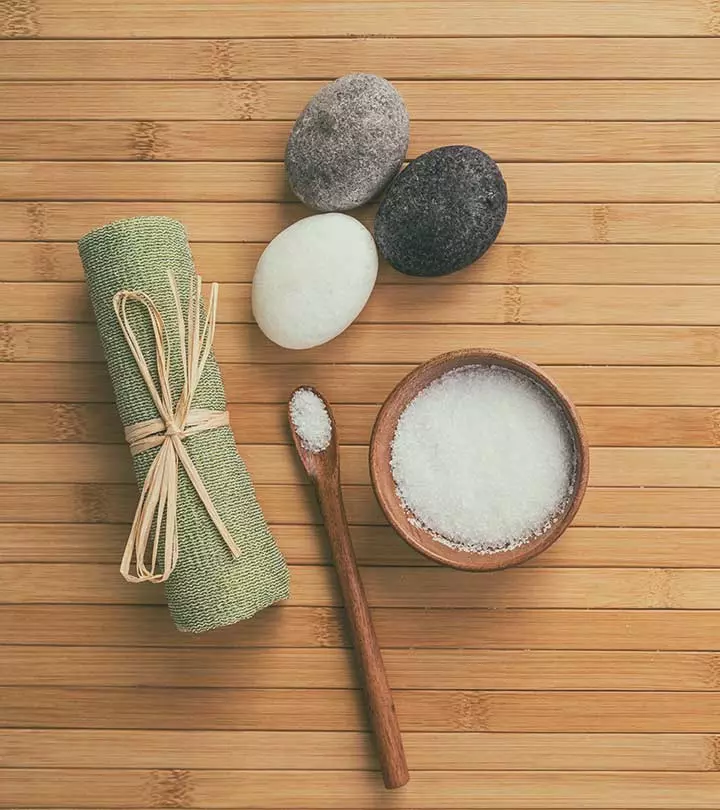


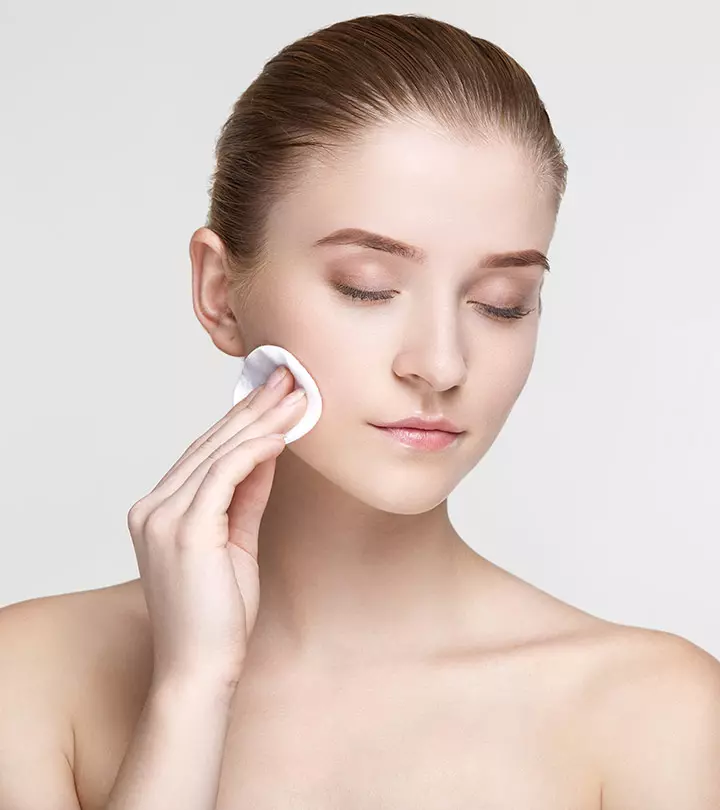
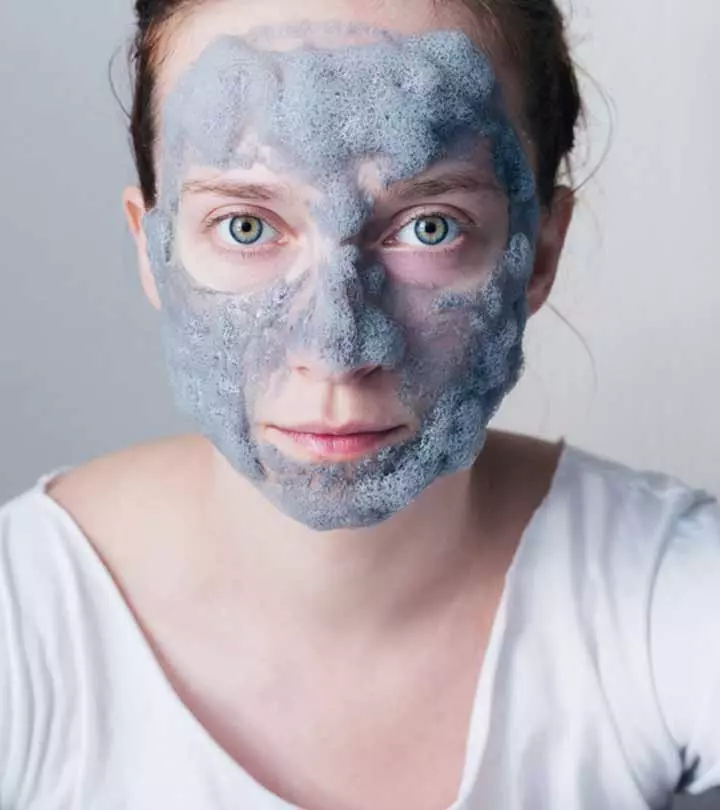




Community Experiences
Join the conversation and become a part of our empowering community! Share your stories, experiences, and insights to connect with other beauty, lifestyle, and health enthusiasts.